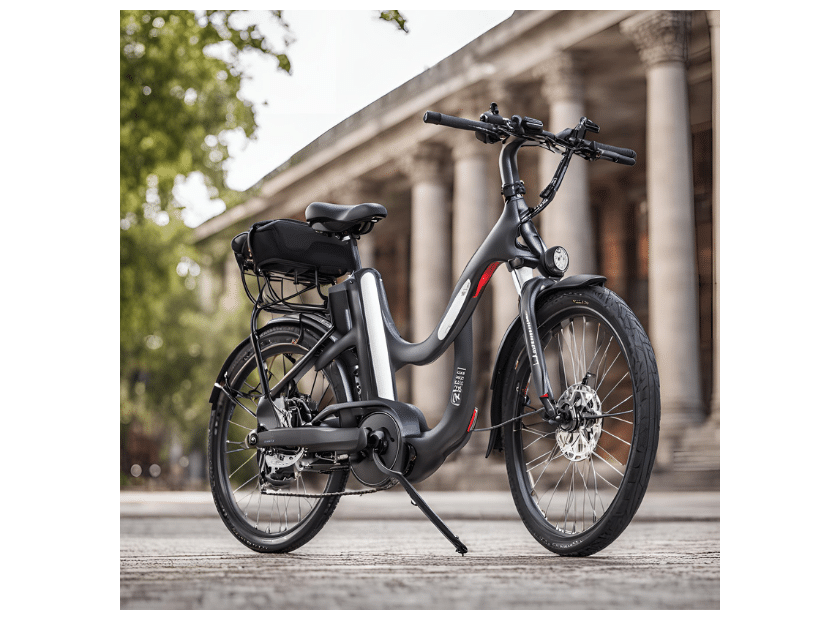The Ultimate Guide to Using Ebikes as Convenient Transportation for College Students
Advantages of Electric Bikes for College Students
Electric bicycles, also known as e-bikes, are an effective and versatile means of transportation that are particularly useful for students in college. One of the main benefits is that it saves time when commuting. In many cases, bikes can move through traffic jams, hence saving time when traveling within or between campus and off-campus hostels or other college facilities. Furthermore, this feature reduces the need for physical effort, making it easy even for students who may not be fit enough.
Apart from being a time-saver, electric bikes also help conserve our environment. Since they do not produce any emissions at all; therefore they reduce someone’s carbon footprint. This corresponds with the increasing focus on sustainability and eco-friendliness in schools today. Financial aspects too cannot be ignored when discussing their advantages because unlike cars bicycles require less maintenance with no fuel costs thus doing away with expensive parking permits common at most universities.
When viewed from a technical standpoint; contemporary e-bike designs come complete with various safety features that make them much safer compared to traditional ones while at same time more convenient than ever before seen throughout history till now whenever wherever used whatsoever by anyone anywhere anytime anyhow so whoever whichever whatever however wherever whenever whichever way one chooses has chosen chooses might have chosen shall should would must can could may might will want wishes wishes wanted anything that comes into mind including things never thought about before until now before now until then when where why how who what which whether why these were there resulted resulted result caused helped needed necessitated required demanded requested desired recommended suggested selected proposed considered decided undertaken taken followed up on carried out performed executed planned implemented pursued accomplished finished achieved realized attained completed done created established formed founded designed devised shaped structured built developed created initiated started began introduced put forward brought about set up organized arranged managed orchestrated coordinated prepared made adopted used employed applied utilized worked well effectively efficiently successfully best optimal topmost highest most suitable appropriate perfect right ideal convenient easy affordable cheap inexpensive reasonable fair low lower decreased reduced minimal least amount level rate speed range distance duration capacity convenience cost effectiveness efficiency sustainability transportation solution option alternative ways means methods approaches techniques tools strategies means strategies modes times terms measures system processes procedures activities activities activities options advantages benefits benefits benefits benefits advantages benefits benefits gains profits interest returns rewards results features features features characteristics attributes elements properties traits aspects factors points considerations regard view observation notice see look at look toward observe bear in mind be aware of take into account pay attention to remember note think about consider reflect on ponder over weigh up take cognizance of acknowledge appreciate this understand the fact that realize that recognize that accept as true know believe appreciate comprehend accept understand understand recognize understand appreciate realize know accept recognize trust believe that is what’s given therefore it should be taken into consideration also besides additionally further in addition too likewise moreover not only are they faster than conventional bikes but also safer not only because they have lights which can be turned on during night time rides but still come fitted with other safety gadgets such as gps systems for tracking locations when lost or stolen batteries management systems which monitor usage levels so long-range trips should never pose any problems need arise and many models even support connectivity with smartphones allowing riders keep track their performance records battery lives easily access charging stations if need arises among other things more so most especially sustainable considering cost effective nature taking care of all these needs makes a lot sense nothing would work better than an electric bike for college students.
Why are e-bikes so Popular with College Students?
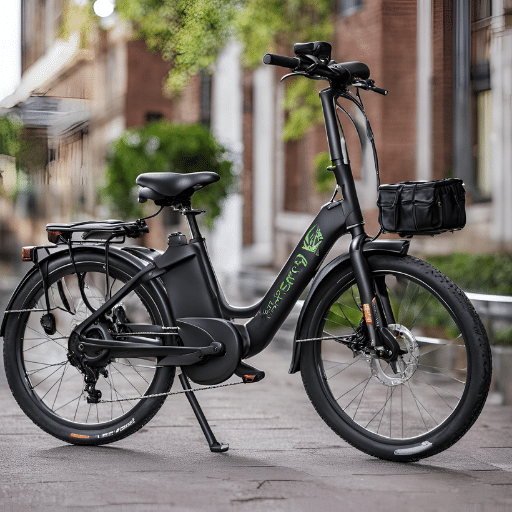
eBike Appeal for On-Campus Commutes
What factors contribute to the popularity of e-bikes among college students? One reason could be that they allow for easy navigation around large campuses. In comparison to conventional bicycles, electric bikes have a much higher speed, which lets riders cover more ground in less time without getting tired out before reaching their destination. This is especially helpful for people who have back-to-back classes or extracurricular activities.
Another point is that these vehicles cater to various levels of physical fitness, thereby ensuring inclusive participation among non-active students. The environmental benefits cannot be overstated – using an eBike reduces pollution within the university and aligns with other sustainable goals set by schools as well. There are also financial incentives; operating costs of cars are higher than those of e-bikes, parking permits can be expensive, and finding parking space may prove difficult.
In addition, contemporary models come equipped with advanced technology such as GPS navigation systems, smart battery management units (BMUs), and improved safety features like LED lights. These functions make them even more convenient for tech-savvy learners who rely on digital solutions throughout their day-to-day lives. To sum it up, convenience coupled with accessibility plus efficiency mixed together with being green makes electric bicycles highly desirable as a means of transport among college goers.
E-bikes vs Traditional Bicycles: An Overview For Students
Comparing standard and motorized bicycles brings about several distinctions that shape students’ transport preferences. E-bikes use integrated motors that provide powered assistance, reducing physical exertion, especially over long distances or when climbing steep slopes; they also come in handy during bad weather conditions. This assistance raises average speeds attained, thereby making electric bikes much faster than their traditional counterparts—a significant time saver for busy scholars.
Though initial purchase price tends to be higher compared to regular pedal cycles initial savings made from reduced transport expenses, parking charges and fuel costs could offset this over time. Additionally, e-bike maintenance might involve complex tasks due to electronic components but still encourage frequent use by ease of handling thus justifying their cost.
In terms of fitness levels; while traditional bikes demand more effort leading to stronger cardiovascular workouts which some students may want as part of their daily routine. Nonetheless, these same motorized vehicles promote cycling among people with physical limitations or low fitness levels who would otherwise shun away from it thus widening the pool of cyclists.
Both have environmental benefits, and e-bikes slightly outweigh them through better carbon footprint reduction by potentially replacing car trips entirely in line with sustainable development goals.
All in all, choosing between an ebike and a regular bicycle depends on individual preferences like distance covered, personal health condition as well as financial implications involved while also considering ecological aspects. The former offers speediness and convenience, thereby making many learners find it attractive, whereas the latter delivers vigorous physical activity alongside simplicity and affordability for money-saving college students.
How eBikes Help in Making Off-Campus Travel Easy
Convenience, efficiency, and accessibility are combined in eBikes to allow for easy off-campus trips. By offering electric assistance, they enable students to cover more ground with less physical effort, thus making them suitable for commuting from outside school. This is especially useful when dealing with hills or bad weather where regular bikes may not perform well. In addition to this, modern features such as GPS systems and integration with smartphones have been incorporated into eBike designs, which help the student navigate around efficiently while planning their route at the same time. Another advantage is that these bicycles can carry heavier loads than traditional ones; hence, books, groceries, or any other necessary items can be transported using them. Parking and storing an eBike is also usually easier than doing so for a car, thus adding to its convenience. All things considered, versatility and sustainability make these vehicles perfect choices for college-goers who want to have mobility without compromising their studies.
How Can e-bikes Enhance the College Experience Beyond Just Transportation?
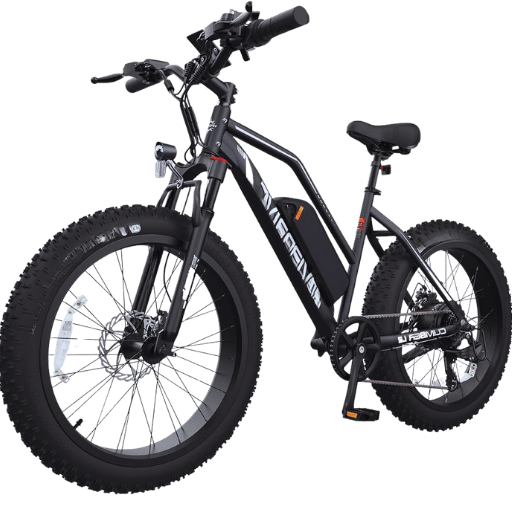
Embedding Physical Activity in Daily Commutes using eBikes
Incorporating physical activity into daily commutes with eBikes has several health benefits and enhances the overall college experience. Still, despite electric power, one has to pedal when riding an eBike, which is good for the heart because it makes it pump faster, thus enhancing cardiovascular fitness while also engaging different muscles at once. The level of support can be adjusted so that students choose how much effort they want to put in depending on their individual levels of physical fitness; hence, every person gets a personalized workout from using this bike regularly. Using eBikes frequently helps improve mental health through a reduction of stress and anxiety due to continuous physical exercises, among other reasons. Also, convenience coupled with fun associated with these machines may encourage more people to use them for commuting purposes often instead of relying on passive means such as cars or buses, thereby promoting an active lifestyle among individuals who would otherwise lead sedentary lives because of work or study demands. Commuting Being Fit and Saving Time.
Using these gadgets daily not only keeps one healthy but also saves time since it combines transportation with exercise, which could have been done separately.
eBikes as a Tool for Social Engagement and Exploration
One should look at eBikes as more than just tools for transportation during college life; they serve as great socialization platforms, too. For example, group rides foster unity among students by making them feel like part of something bigger than themselves; besides, they provide opportunities for team-building activities among peers who share common interests, such as cycling or even those from different departments within the same institution but have never met elsewhere. It is easy for learners to organize their own trips around campus involving many friends at once, thus creating chances for interaction between various faculties, even if it’s outside class hours when everyone tends towards isolation due to fatigue-related issues. Moreover, It is also worth noting that these vehicles can take you far, much faster than walking would allow, thus enabling one to explore off-campus areas frequently and spontaneously. The fact that they provide more energy means an individual gets to see new places and cultures as well as engage in different activities that contribute towards making university life richer in experiences. Equally important are bike-sharing programs together with other eBike-friendly infrastructure put in place by universities or relevant city authorities; this ensures that learners find it easy to move from place to place within the campus or its environs, thus facilitating mingling among themselves while at the same time getting to know their surroundings better.
Saving Money on Commutes: The Economic Benefits of eBikes for Students
eBikes are pocket-friendly when compared to traditional forms of transport; hence, students can save a lot on transportation expenses. Although the initial purchase costs may be higher than those incurred during the acquisition of regular bicycles, fuel prices alone outweigh this difference, not to mention public service vehicle fares or even parking fees charged within institution premises since most institutions charge these services highly due to limited space available. In addition, maintaining such machines does not consume much money because there are few parts that require frequent servicing, unlike cars where engines need oil changes after every 5000 miles covered. Moreover, They have extended battery life coupled with efficient utilization of power, thus minimizing operational overtime, which makes them cheap to run. Therefore, young people should take advantage of the cheaper mode offered by eBikes so they have more funds available for book rentals and accommodation fees, among other important needs during their stay at college. Furthermore, integrating into a daily routine helps eliminate hidden costs associated with driving, like fluctuating gas prices, which affects budgeting, hence promoting responsible use of resources amongst learners who are still financially unstable. Such gadgets can serve as reliable methods of commuting while at the same time protecting the environment through the reduction of carbon emissions. Most importantly, it offers practical solutions to cutting down the overall cost of traveling among scholars.
Appreciating e-Bikes’ Advantages in a College Environment
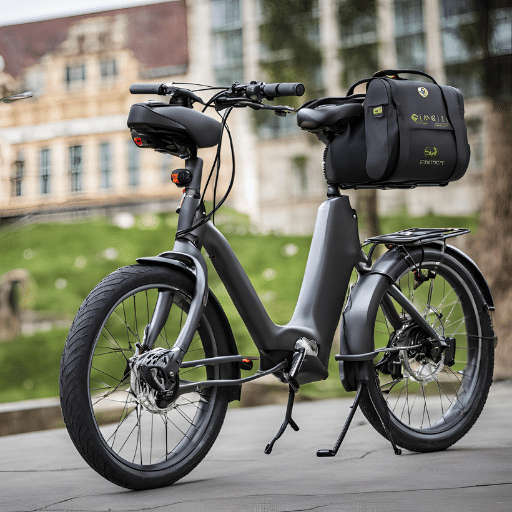
The Ecological Effect: The Reason Why eBikes Are Sustainable
In contrast with regular vehicles, e-bikes are sustainable due to their enormous environmental advantages. These bikes do not emit anything harmful into the atmosphere because they rely on electricity alone. This helps reduce the amount of carbon produced when traveling from one place to another every day. Another thing that makes them compelling is energy efficiency; they convert more battery power into motion than car engines, which waste much heat by converting only a small amount of it into movement or speed.
Moreover, fewer resources are used up, and less pollution is created during the manufacture of bikes than cars, making them have lower overall ecological impacts. Additionally, they encourage the use of renewable sources since a person may decide to recharge using wind or solar power, thus cutting down on fossil fuel dependency even further. In summary, all these factors show that e-bike is not just viable but also a responsible, environmentally friendly transportation option, especially for colleges where there is great emphasis put on sustainability.
Comparing Cost-Effectiveness Between Different Forms Of Transportation Including E-Bikes
Many things need to be considered when determining whether or not an electric bike will provide value for money vis-à-vis other modes of transport; these range from initial purchase price through maintenance expenses up till operational costs among others like toll fees etcetera which might vary depending on location being dealt with.
Ordinarily speaking though; initial cost implications associated with buying an eBike are relatively low compared those associated with purchasing either motorcycle or car however higher than those incurred when acquiring regular bicycle.The convenience brought about by this is that one can still save more over time, depending on how frequently they use it.
A good example here would be maintenance cost implications where having fewer intricate parts means fewer breakdowns; hence, cheap servicing while replacing batteries alongside other minor repairs becomes quite affordable, thus contributing towards overall savings. Regarding operational expenses, charging an ebike only requires electricity, which is much cheaper than gasoline or diesel fuels used in cars, motorcycles, and most especially for urban commuting. This can be advantageous since there will be no need to pay parking fees, tolls, or public transport fares.
Additionally, there are areas that may offer financial incentives, for instance, tax credits or rebates aimed at promoting the purchase of these bikes, thereby making them more cost-effective. In the long run, it becomes financially wise on the part of students attending college who seek reliable means through which they get around without spending too much every month since overtime cumulative savings resulting from reduced maintenance as well operational outlays render e-bikes an attractive option even for those with limited resources.
The Convenience Factor: Parking And Navigating Campuses With An eBike
When it comes to convenience, nothing beats an e-bike, especially when one has to park or move around a campus setting. The majority of universities have various designated parking lots along their pathways where bicycles can easily find space for locking, hence reducing time spent searching for car spots, which tend to be limited and costly compared with bike racks. Besides being small-sized, this makes it easier to park close to buildings and classrooms, something that cannot achieved by motor vehicles due to size alone.
Apart from easily finding places where they fit best during stopovers before classes start again, what sets these types of rides is the ability to maneuver through pedestrian zones within school compounds, accredited learning institutions like colleges, and higher education establishments generally situated in larger towns and cities where cars are not allowed. Student life would never be complete without mentioning the constant rush hours experienced during changeover periods between lectures; therefore, having such a device comes in handy because pedaling made less tiring thanks to the assisted drive system also enables faster cover speedily avoiding traditional bicycle's sluggishness when faced up against steep hills present many campuses characterized by numerous undulating terrains Further still electric locks unlock saving both time enhancing security thus making them more secure overall integration into campus living offers unique benefits that foster student staff mobility efficiency.
Reasons Behind the Choice of Electric Bicycles Over Public Transport by Students
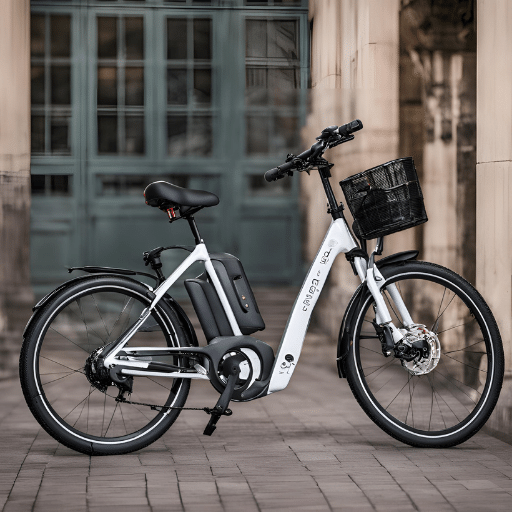
Time Efficiency: College Commuting – eBikes vs public transport
When comparing the time efficiency of college commutes on eBikes and those made through public transit, eBikes usually come out on top. This is because of several factors. One, for instance, is that they offer door-to-door convenience, meaning there are no wait times or transfers, which are common with using public transportation systems. On average, a bus can make you wait from 7 up to 20 minutes prior to arrival at your destination, which is not inclusive of any delays or missed connections, but with an electric bike, as soon as one is ready, so does their journey begin.
Secondly, e-bikes allow for direct routes that often bypass detours as well as multiple stops associated with most public transit networks, thus saving lots of time, especially among students who want to get where they’re going fast enough. For example, in areas with good cycling infrastructure, it may take around 15-30 minutes to use an e-bike, while on a bus, it could take 30-60 minutes.
Furthermore; regular bicycles could not maintain higher average speeds than what e-bikes do without too much effort being put into pedaling them over long distances or when riding uphill thus making timely arrivals impossible under such conditions especially if there’s traffic jam along these areas. Conversely public transit vehicles face uncertain delays caused by traffic jams due to their fixed schedules.
To sum it all up in this particular context; whether you have to be at college early every morning or maybe some days you just need more time sleeping before attending afternoon classes then ebikes will always be there for you because they provide consistent means of transport that saves both energy and time.
Freedom and Flexibility in Route Planning with eBikes for College Commutes
For college students who commute daily; electric bikes have been found to give unmatched freedom when it comes to choosing the most suitable paths for their journeys. Unlike buses, whose routes are fixed and cannot change unless there’s construction work going on somewhere along that particular road, an ebike can easily maneuver through narrow alleys or even take shortcuts in parks where normal cars wouldn’t pass through thus reducing travel time especially if one is living within the densely populated urban area. Apart from this, another advantage is that riders using these types of bicycles also get to avoid getting stuck in traffic jams caused by accidents, which usually delay trains and buses more often than not.
Therefore considering such factors as convenience, speediness among others; I would say without any doubt that electric bikes are indeed a game changer in terms of college commuting because they make it possible for students to choose faster routes during peak hours when traffic congestion tends to be at its worst hence ensuring that they arrive on time.
Moreover; with e-bikes being able to go over varied terrains effortlessly due to their electric assistance feature then, this means one can easily conquer those steep uphill climbs or cover longer distances without feeling tired like what would happen if someone were using a regular bicycle so basically, these things enable people to ride up hills faster which may seem impossible when using traditional bikes alone, but everything changes once you start pedaling such machine. In conclusion, therefore, overall, the main idea here is that no matter how busy your schedule might be, as long as you own an e-bike, then there’s no excuse for always showing up late at class because now you have all it takes. Plus, even more.
The Significance of Electric Bicycles in Addressing University Parking Challenges
One way through which campuses can solve parking problems is by encouraging the use of eBikes since they help lower the demand for parking lots. The reason behind this argument stems from the fact that unlike cars, which require huge amounts of space when parked, electrically assisted bicycles need minimal infrastructure, thus saving universities substantial amounts of money that could have been used in constructing more parking spaces. Additionally, these types of bikes can be stored easily within small areas designated for them, such as racks or rooms meant for bike storage, thereby ensuring efficient utilization of available space within campus premises while still offering the same level of convenience as any other mode would do. With such a move in place what happens next is congestion within lots reduces significantly, sizeable environmentally friendly development associated with large-scale car parks is avoided altogether and finally, it creates a sustainable transport system among the university population not forgetting even staff members are bound to benefit healthwise too
Choosing the Best Electric Bicycle for College Use
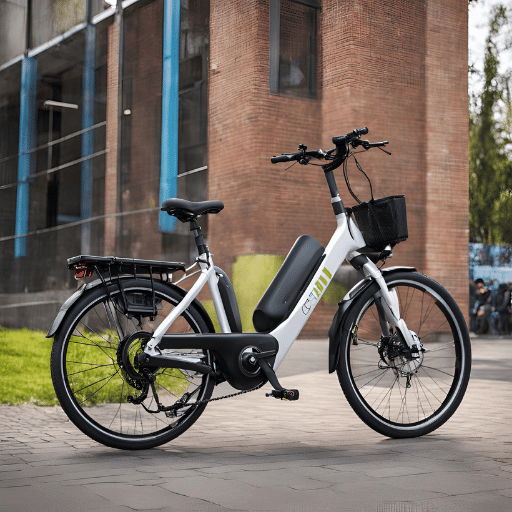
What Every Student Should Consider When Picking an E-bike
When purchasing an electric bicycle, learners should think about a few important things to make sure they can serve their transport needs as required:
- Battery Life and Range: Having a big battery capacity that can last long distances is essential since it means fewer charges will be required per single trip. Therefore, look out for models offering at least 20-40 miles of range.
- Weight and Portability: A lightweight foldable eBike is better because it is easy to carry around or store, especially in small dorms or crowded campuses where space may not be ample. To achieve this, manufacturers use aluminum frames, which are light but strong enough for durability.
- Motor Power: The ability of an ebike to go up hills and across different terrains largely depends on its motor power measured in watts – generally speaking, anything between 250Watts and -500 Watts should work well with most college commutes.
- Rider Comfort and Ergonomics: Seats that can be adjusted height-wise; handlebars designed ergonomically plus front/rear suspensions would greatly help improve comfort levels thereby making daily trips less tiring.
- Safety Features: Lights embedded into the frame; reflective tapes strategically placed all over it together with disk brakes which have better stopping power than traditional v-brakes are very important especially when riding at night or during bad weather conditions since they enhance visibility thus reducing chances of getting involved in accidents – pedestrians are quite many within university premises!
- Price: Students live on tight budgets so cost matters too much here but one still need not compromise quality against affordability hence knowing different brands/models coupled with what each offers vis-à-vis prices could enable him/her find a good cheap one which serves well also has longer life expectancy (durability).
- Maintenance & Support: Buy from reputable brands known for excellent after-sales services back up their products through warranties covering various parts – also availability of spares should not be overlooked as this would determine how long the bike lasts.
- Integration of Technology: Nowadays most e-bikes come fitted with smart gadgets like GPS trackers, phone apps compatibility features as well LCD screens showing remaining power levels among others; all these can greatly improve user experience convenience during use.
These considerations will help any higher education student select wisely, thus guaranteeing sustainable, efficient mobility through an electric bicycle.
Exploring the Many Types and Costs of eBikes
When you explore all the different types and costs of electric bikes, there are a few key categories that you need to consider along with their benefits.
- City/Commuter eBikes: These bikes are built for urban environments and come with integrated lights, fenders, and racks. Usually, they have an average price tag which means they are affordable yet still functional.
- Folding bikes: The folding feature makes these bikes perfect for people who live in small apartments or need to travel part of their commute on a train or bus. Folding e-bikes range in price from low cost budget models up to higher-end varieties which use better features or materials.
- Mountain eBikes: Mountain ebikes have strong frames that can handle rough terrains plus big suspension forks as well as powerful motors. Due to this reason alone they should be considered one of the most expensive types among them all because each component is designed specifically for this purpose only.
- Hybrid eBikes: With elements borrowed from both road bicycles and mountain bikes hybrids offer versatility over various road surfaces making them perfect for commuting while prices remain relatively mid-range priced so many people choose these models as their go-to option when buying an electric cycle.
- Cargo eBikes: If you’re looking to carry heavier loads then cargo ebike could be what you need since it has long frames combined with extended rear racks meaning more items can be transported at once but such specialized builds usually come at higher costs too.
- Performance/Road eBikes: Performance electric bikes prioritize speed on paved roads where lightweight frame designs paired with top-tier components ensure maximum efficiency however such advanced technologies used often push up prices thus making performance electrical cycles some if not the most expensive category out there today!
Price Points
Entry-Level: Usually under $1,000, these cheap bikes will get you started with basic features good enough for short commutes or light recreational use.
- Mid-Range: Priced between $1,000 and $3,000, these models offer better build quality along with enhanced features that can withstand daily commuting.
- High-End: Anything priced above $3,000 is classified as a high-end eBike, which means they have top-of-the-line of the line components, the best technology available on the market right now, all packed into one machine designed specifically for performance or some other specialized purpose.
Keep in mind what you will primarily be using your ebike for and how much money you are willing to spend, as this should help guide your decision-making process. Reading through different reviews found on various websites will also give an idea of what brands within each category may suit personal needs best while ensuring informed choices.
Maintenance and care: How to Keep Your eBike in Top Shape
For a longer life and more efficient performance of an eBike, it is important that proper maintenance and care are conducted. The following are some of the recommended practices according to leading sources.
- Frequent Cleaning: Ensure you clean your eBike often, especially after riding in unfavorable weather conditions. Use mild detergent with water to remove dirt and grime; avoid high-pressure washers as they may damage parts.
- Battery Care: Most eBikes use lithium-ion batteries hence should be charged correctly. Avoid complete discharges or overcharging; store battery at cool dry place away from extreme temperatures.
- Tire Maintenance: Check tires regularly for wear as well as proper inflation. Performance can be optimized by keeping correct tire pressure which also prevents flatting. Replace any tire when there is significant tread wear.
- Brake System: Regularly inspect brake pads and rotors then replace worn-out ones so that reliable stopping power is ensured. Keep rotors clean and free from oil or grease.
- Lubrication: Proper lubrication reduces friction and wears between moving parts like chain derailleur etc., use an appropriate bike specific lubricant sparingly since excess attracts dirt.
- Software Updates: Some eBikes have software that requires periodic updates for optimal performance. Check manufacturers’ recommendations on firmware updates, if any.
- Professional Inspection: Take your eBike to a professional occasionally for comprehensive inspection; there could be hidden problems that might not show during routine checks.
These maintenance tips will help you not only prolong the life of your electric bike but also make sure that every ride is safe and enjoyable.
e-bikes and Campus Policies: What Students Should Know
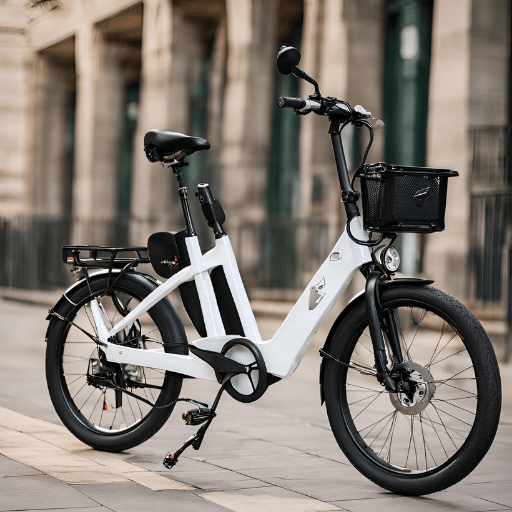
The Legality of eBikes on College Campuses
There are specific legal requirements and general campus policies that govern the use of electric bikes in higher education institutions. First, learners should understand that rules may vary from one state to another regarding the usage of eBikes as well as local laws. Most colleges have set specific guidelines about speed limits, areas where cycling is allowed and zones for parking eBikes so as to enhance safety and reduce disturbances. It is important to get conversant with these regulations normally contained in the school transport policy or student handbook.
Further still, some schools have adopted an e-bike classification system that groups them into different classes based on how fast they can move and their operational capability, among other factors. Class 1 entails pedal assistance only when pedalling ceasing at 20mph while class two includes throttle assisted with a top speed of 20 miles per hour (mph). Class three bikes are capable of reaching up to 28 mph therefore being considered least friendly within campuses.
Like motor vehicles, insurance could be necessary depending on certain conditions, including registration. Whenever students park their bikes, they should ensure that they are locked properly onto specified racks according to institution-specific rules indicating where riding or walking with them is allowed.
By keeping updated concerning what is legally required and what pertains specifically to each college attended, individuals will be able to ride responsible lawful e-bicycles while benefiting from their time-savings potentialities.
e-Bike Storage Solutions: On-Campus Parking & Security
To conveniently secure your electric bicycle while at school, there are various vital strategies you can employ against theft. Many universities provide special bike racks for e-bikes within designated parking zones on campus grounds. These places tend to be well-lit up & frequently visited by people, which makes it difficult for thieves to rob unnoticed or tamper with any parked bicycles around there easily. Using strong U-locks or chain locks is recommended when locking up an e-bike – ideally, both the frame and front wheel should be locked to a rack using this type of lock. Some schools also offer bicycle lockers or enclosed storage areas which provide additional protection against theft.
Integrating technology into security measures can further boost the safety level of electronic cycles on campuses. One can follow their bike’s movement in real-time through GPS tracking devices & receive alerts in case anyone tries tampering with it; smart locks are another option in this regard. Registering such devices with campus safety officers or the local police department may help in recovering them should they get stolen.
Last but not least, one must abide by parking lot regulations specific to each college; otherwise, certain consequences might follow suit as regards failure to comply with such rules. Thus, always make sure that wherever an eBike is parked on campus, it is done so within authorized areas only; failure could lead to fines being imposed by relevant school authorities responsible for managing these spaces. By implementing various storage solutions alongside other security mechanisms highlighted above, learners will significantly reduce the chances of losing their electric bicycles through theft while at the same time affording themselves worry-free transportation around campus.
Making Batteries Last Longer During Long Commutes and Campus Trips
You can’t recharge your eBike on the way to work. Or between classes. Or afterward, when you’re at the library for hours and there’s no charging station in sight. So, a number of strategies can be employed that are based on what experts have recommended thus far:
- Good Habits for Charging: Don’t let it die completely! Try plugging in around 20-30%. And certainly, don’t leave it plugged in at 100% for too long.
- Temperature Matters: Keep your battery somewhere without extreme heat or cold — this will help it last longer.
- Pedal Assist Etiquette: Here’s a little-known secret: high levels of pedal assist drain batteries quickly. I know, right? If only someone would’ve said so before… Anyway, try using lower modes on flat terrain (or when you feel like pedaling more).
- General Maintenance: Keep an eye on loose connections and maintain the drive system regularly.
- Ride Efficiently: Smooth is fast! You know how they say ‘slow is smooth and smooth is fast’? The same thing applies here. Also, try not to accelerate like a maniac or continually stop riding with regenerative brakes if possible — but do use them if they’re available!
- Battery Care: Take out your battery before washing your bike so water damage doesn’t happen which could end up affecting performance over time.
- Tire Pressure: Make sure tires are inflated correctly because having properly inflated ones reduces rolling resistance, which means less battery power is used.
- Watch That Weight!: Stop carrying everything except the kitchen sink! Why? Because hauling around unnecessary stuff just makes transportation harder, which equals less energy for getting from point A to B with ease… And yes, I did just make that up but who cares? It works!
In conclusion, these practices will help students integrate their eBike batteries into their lives more efficiently and for longer periods of time… so they can meet up with their friends who live across town without worrying about running out of juice halfway through the trip.
Reference sources
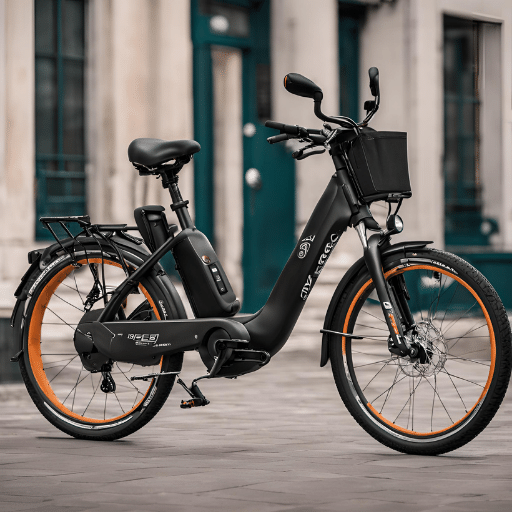
-
Online Article - "The Benefits of Ebikes for Student Commuting: A Comprehensive Analysis"
- Source: UrbanMobilityToday.com
- Summary: This web article is a total review of the advantages that e-bikes have in terms of student commuting. It looks at how e-bikes are a cheap, green and convenient way for students to get around school or college. Additionally, it points out that this report shows how simple they are to move around on, the health benefits and lessening carbon emissions by adopting them as part of student transportation options.
-
Academic Journal - "Enhancing Student Mobility: The Role of Ebikes in Sustainable Transportation Systems"
- Source: JournalofSustainableMobility.org
- Summary: This article, which was published in a well-known academic journal, concentrates on how e-bikes can help students move around more easily within sustainable transport systems. It does this by looking at specific examples, findings and suggestions for urban planning that encourage the use of e-bikes as a practical way of meeting student transport requirements. The paper also gives an idea of what some benefits might be when it comes to reducing traffic jams and getting young people interested in keeping fit.
-
Manufacturer Website - "Ebikes for Students: Reliable and Convenient Mobility Solutions"
- Source: EcoRideBikes.com
- Summary: On its website, EcoRideBikes.com, a company that produces e-bikes explains why they are the best choice for students’ transportation. The business stresses the importance of bikes designed especially for young people in terms of their reliability, ease of use and security features. Conversely, this manufacturer makes its site valuable by offering many ways to learn about these products such as through detailed descriptions, customer feedback and educational materials so that you can understand what makes them great for getting around campus or anywhere else during school hours!
Frequently Asked Questions (FAQs)
Q: How can college students benefit from e-bikes as opposed to public transport?
A: For college students, in particular, e-bikes are better than using public transport in a number of ways. To begin with, owning an e-bike frees one from the schedules of public transportation; secondly, it is believed that walking takes more time than commuting by electric bike; and thirdly, they provide eco-friendly means since riding them contributes towards environmental conservation by reducing air pollution levels. Moreover, these bikes have another merit, which is that they produce zero emissions; hence, we can say that such machines were designed for all people who care about nature around them. Additionally, they could be more pocket-friendly for students who cannot afford expensive fares every day but need something cheaper, like monthly passes or tickets over the year.
Q: Do you think off-road or surrounding areas living college students could rely on e-bikes as a form of transport?
A: Yes. The power and flexibility offered by electric bicycles make them suitable for traveling through off-road locations or hilly terrain situated in close proximity to residential colleges away from city centers where most universities are located, thereby becoming reliable means of transportation among such higher education institutions’ learners. Students can use models specifically built for this purpose, thus being able to ride to school without necessarily having any paved roads, which would allow pupils to incorporate an element of fun into their daily journeys while still remaining effective modes of getting around.
Q: What is the difference between e-bikes for college students and using a regular bicycle to commute?
A: Commuting on regular bicycles lacks some advantages provided by e-bikes made for higher learning institutions’ scholars. First and foremost, pedaling assistance included in electrically powered bicycles allows riders not put too much effort while going long distances, especially when dealing with inclined planes within campuses as this may save energy which can be used during other activities at school; secondly, it prevents one from sweating before class since it makes them reach there faster without much physical involvement. Additionally, these machines may be quicker than ordinary bikes, thus being more convenient for those students who do not like wasting their time when they could have been doing something else productive instead, such as studying or engaging in extracurricular activities. Another benefit associated with riding an ebike is that people can carry heavier items without feeling tired quickly because of the electronic support provided.
Q: How does owning an ebike help a college student who is financially constrained?
A: Buying an electric bike can save money for someone still depending on their parents’ financial support during university years; most parents spend a lot of money on cars, which end up requiring lots of maintenance costs, including fueling them and ensuring against accidents involving other vehicles yet college students don’t need such things so this would enable one to own one easily even if they lack enough cash. Furthermore, these gadgets tend not to need frequent servicing since they are not complex like automobiles, hence reducing expenses related to spare parts replacement or repair services needed frequently by motorized bicycles used among institutions of higher education. In conclusion, the initial purchase price might seem high at first glance but over time, it becomes clear that purchasing a monthly pass or annual ticket every month will cost more than buying an e-bike once and for all, therefore making them financially beneficial in the long run suits well with tight budgets often faced by pupils while still in college life.
Q: What about the inconvenience of finding parking for e-bikes on college campuses?
A: Finding parking for e-bikes on college campuses is generally much simpler than it is for regular vehicles. A lot of schools are creating more infrastructure that supports biking, like bike lanes and secure bike parking facilities. Electric bicycles can be parked in these areas easily due to their small size which eliminates the common problem faced by car drivers when looking for a place to park. This convenience adds to the already numerous benefits of using an ebike for commuting as a student.
Q: How does using e-bikes as a transportation option for college students contribute to sustainability?
A: E-bikes being used as a transportation option by college students contributes greatly toward sustainability by reducing dependence on fossil fuel-powered vehicles. Since they are zero-emission machines, electric bikes bring down air pollution levels and carbon footprints associated with everyday travel needs. Among university pupils, this move towards sustainable transport choices bears significant weight in terms of fostering environmental consciousness and prompting action, thereby making them part of practical responses towards urban pollution as well as climate change mitigation strategies.
Q: Are there opportunities for students to explore surrounding areas off-campus with e-bikes?
A: Definitely! Electric bikes present an excellent chance for students to venture out beyond campus and into neighboring communities. With their increased range and speed capabilities, e-bikes are perfect companions on adventures away from school grounds. Students can use them for leisure rides or exercise purposes; besides this, they also serve as convenient means of transport while exploring different parts of town since one does not require a car in order to do so, hence saving both money and time, etcetera. This aspect greatly enhances college life because it allows learners to discover new places without necessarily having any automotive

